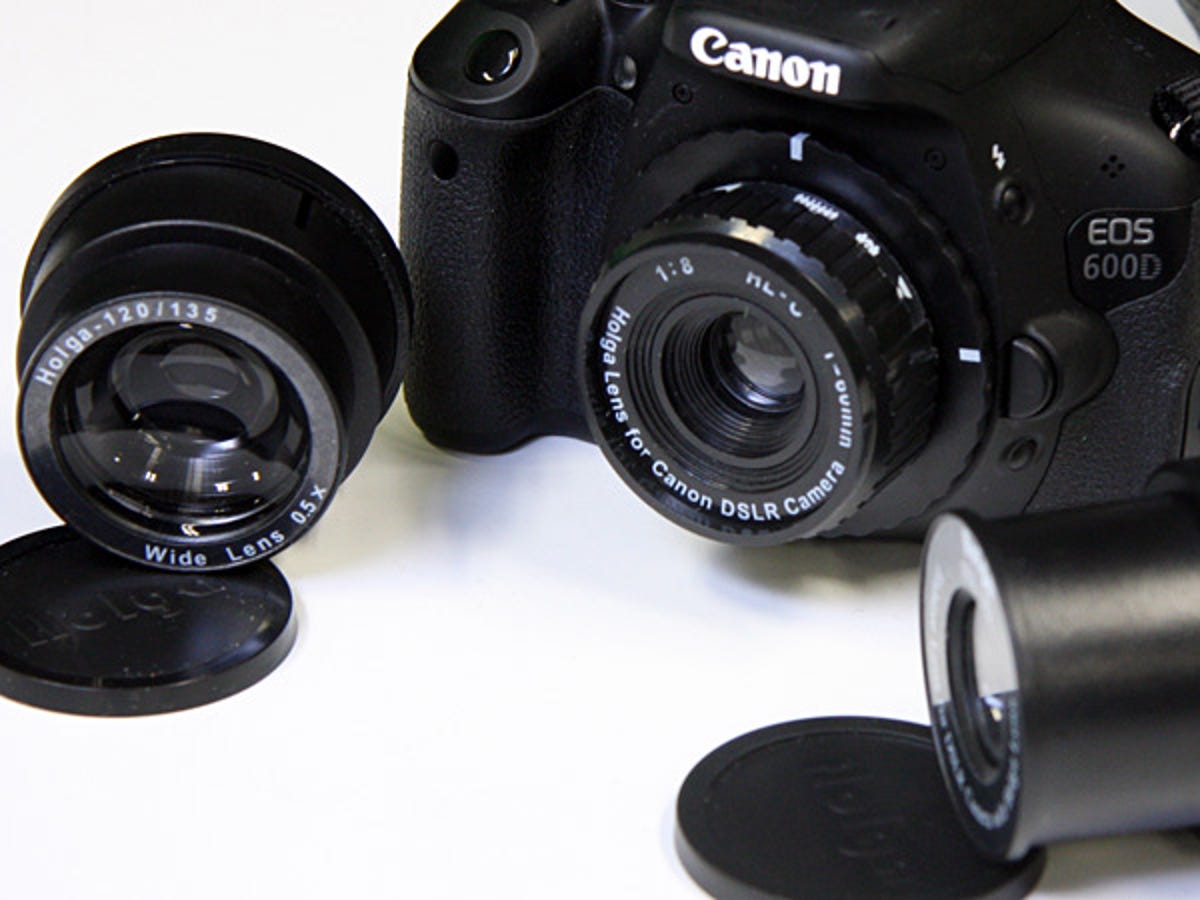
When it comes to lo-fi photography, there's really only one name you need to know — Holga.
The Holga is a plastic toy camera that is characterised by its persistent light leaks, low-quality construction and vignetting. Why on earth would you want to subject your pristine digital camera to these traits, you might ask? Well, because the result is something fun and special. Here's our hands-on gallery with pictures of the kit, as well as some sample images.
For our full review of the Digital Holga lens, click here.
Here's the Digital Holga lens attached to a Canon EOS 600D, the wide-angle and the fish-eye converters sit alongside. Yes, we do understand the irony of having an actual toy camera lens on a digital SLR that has a toy camera filter inside. See what we do with it a little later on.
The Holga lens itself is rather petite and comes with a range of focusing markers. Well, only four really; a single person all on their lonesome, a small family, a huge crowd and, finally, a mountain. It's not too difficult to guess how to apply them in certain situations. It's identical to the Holga lens you find on the film version.
The converters fit over the Holga lens; as you can see the fish-eye attachment is quite a bit bigger than its base counterpart.
Complete with requisite quality-assurance testing sticker on the wide-lens converter.
Here's a shot taken on the Holga lens, straight from the 600D. It was a particularly dreary Sydney day, but the lens still manages to make the scene look rather dreamy.
A comparison between the relative focal length of the regular Holga lens (top) and the telephoto converter (bottom). It doesn't add that much length, and because it sits on top of the lens the image looks even more toy-like than before.
Remember how we said the 600D has a toy camera filter? The top image is the original photo taken with the lens, and the bottom image is with the Canon version of toy camera applied. Apart from exacerbating the vignette and adding a colour tinge there's not that much difference.
The fish-eye converter creates the most dramatic effect, but it also engulfs the outside of the frame in black, like tunnel vision.
Another comparison between the regular lens (top) and wide-angle converter (bottom). There's hardly any difference this time, just a subtle change in focal length. You could probably achieve the same effect just by stepping back a few paces.
Of course, given the plastic construction of the lens, chromatic aberrations and fringing is part and parcel of what you get. The Holga lens also requires a lot of light, so you will find yourself amping up the ISO and using slower shutter speeds just to take a photo.

